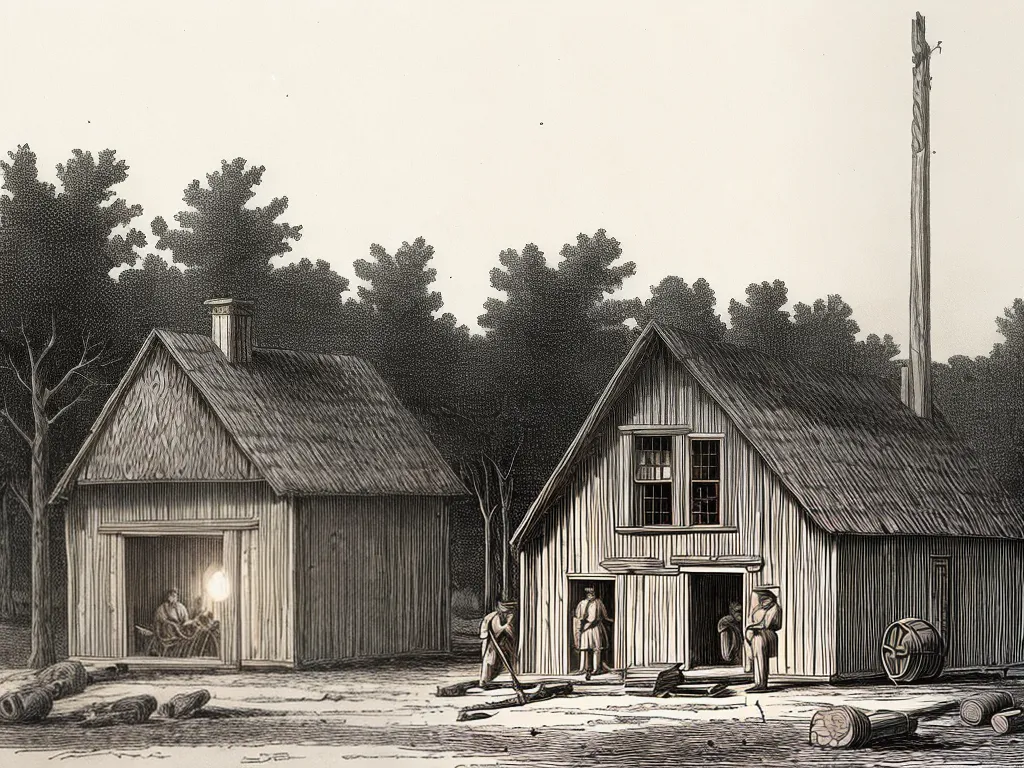
How Early American Settlers Created Lighting Without Electricity
Candle Making
In the days before electricity, early American settlers relied on candles to light their homes at night. Candle making was a common skill, and most households made their own candles. Candles were made by repeatedly dipping wicks into pools of melted tallow or beeswax. Tallow was rendered from beef or mutton fat, while beeswax was harvested from beehives. After each dip, the candles were left to harden slightly before being dipped again. It took many consecutive dips to build up enough wax to form a complete candle. The more dips, the thicker and longer-lasting the candle. Some industrious homesteaders made dipped candles up to 3 feet long! Once I had finished dipping my candles, I would carefully trim the wicks to 1⁄4 inch before lighting them. This prevented the flame from being too smoky.
Rushlights
Another old-fashioned lighting option was the rushlight. To make rushlights, I would take rushes (a wetland plant with a pithy interior) and dip them in melted tallow. The wax-soaked rushes were allowed to harden into long, wick-like cords. I would make rushlights 1-2 feet long and attach them to an upright stake or holder. Lit rushlights produced more of a flickering glow than a steady flame, but they were extremely cheap and easy to make at home. Their portability made them ideal for carrying as temporary lighting from room to room. However, rushlights burned out quickly, so I needed to make new ones every couple of days. They also gave off a faint smoky smell, so I limited their use indoors.
Fireplaces and Hearths
The main hearth fire used for cooking and heating the home provided a natural light source after dusk. To maximize the firelight, many colonial homes had high-ceilinged rooms with large central fireplaces. The fires were kept stoked and burning brightly during the evenings. Families would gather near the fireside to read, sew, socialize, or conduct small crafts and repairs. Strategic placing of chairs, tables, and workbenches around the fireplace optimized the illumination. Mirrors and polished metal surfaces were also arranged to reflect and bounce the firelight to darker corners. In warmer months, smaller cooking fires were built outdoors to avoid heating up the home. On these occasions, outdoor work was swiftly finished up at dusk, and the family shifted indoors to gather near the indoor hearth.
Oil Lamps and Lanterns
Oil lamps provided a superior quality of portable illumination. I filled the reservoirs of my lamps and lanterns with whale oil, lard oil, or other animal-derived oils. I inserted a wick into the spout, trimmed to about 1⁄2 inch to produce a steady, bright flame. The wick absorbed the oil from the reservoir via capillary action and burned as a small flame. The light shone through the glass or horn enclosure. Lamps had flat bases and were used for stationary lighting. Lanterns had metal handles and protected glass sides, making them suitable for holding or hanging through the home or outdoors. I took care to keep the wicks properly trimmed, reservoirs filled with oil, and glass chimneys clean of smoke residue. With attention, my oil lamps and lanterns provided reliable lighting to work, read, or socialize by for several hours each evening.